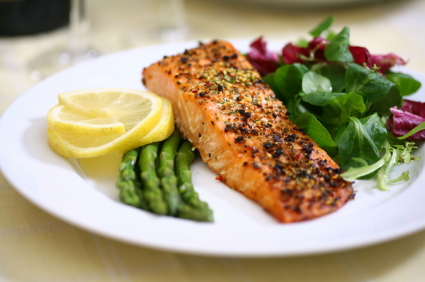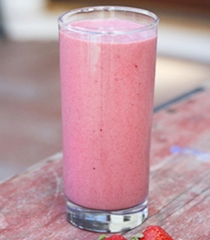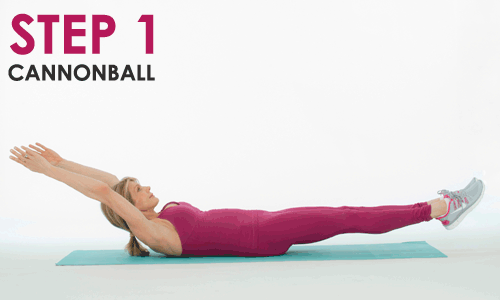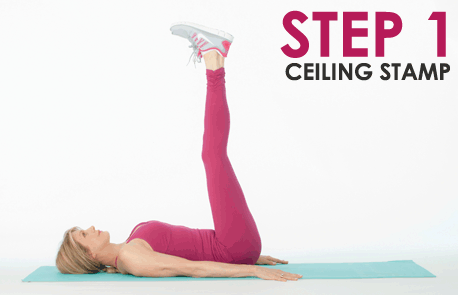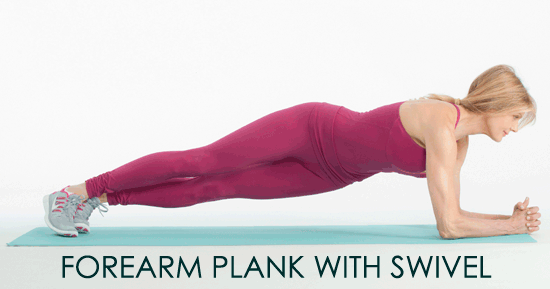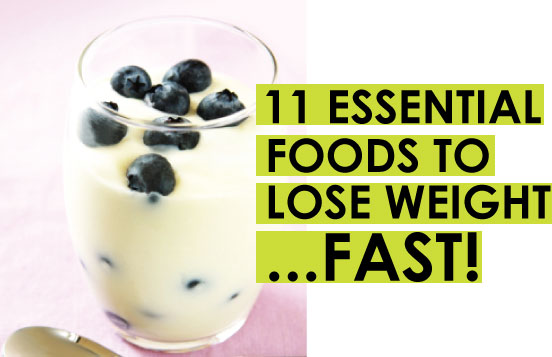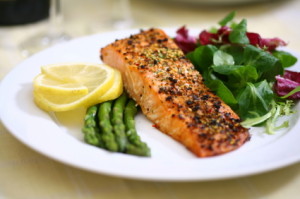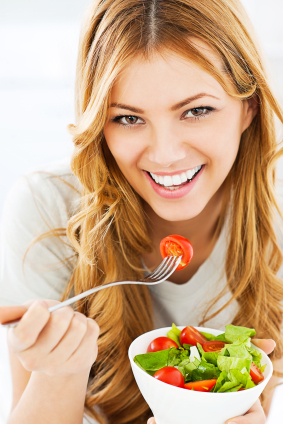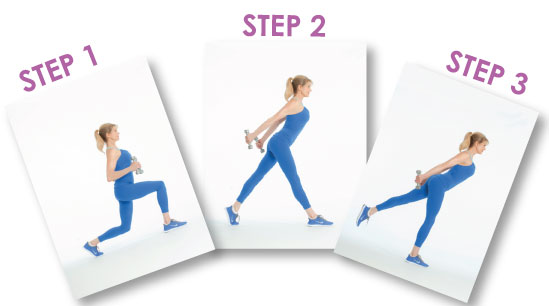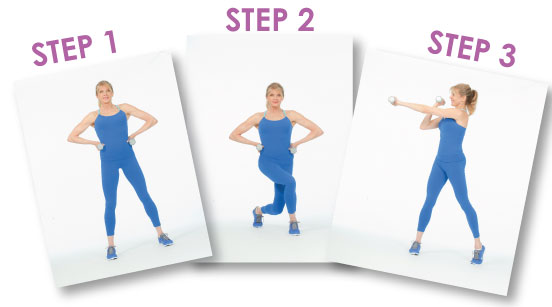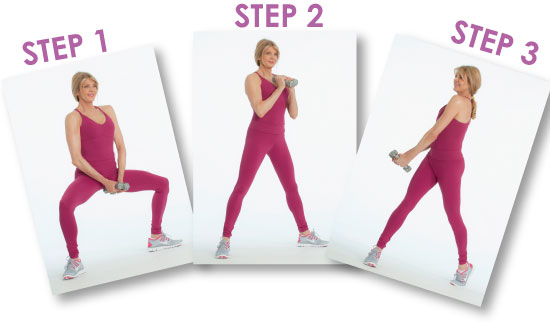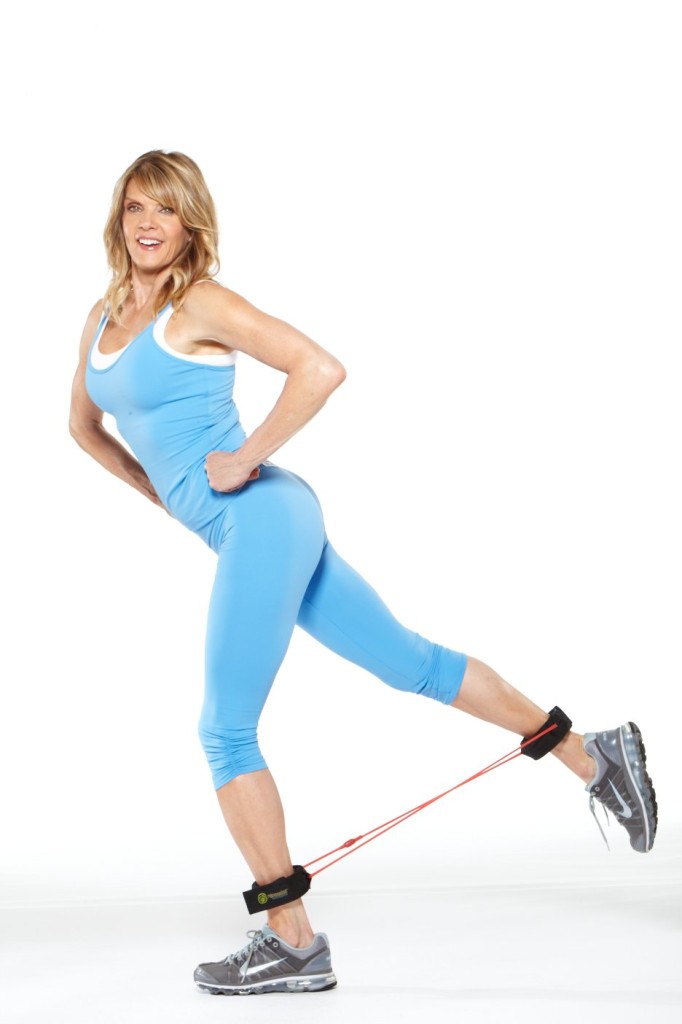The TRUTH About Cellulite
by Kathy Smith
Tabloids love to expose celebrities’ less-than-perfect derrieres or thighs because they, like a lot of people, have cellulite. Of course, no one wants to have cellulite, but chances are most of us do, at least to some degree.
Just because so many of us have cellulite doesn’t mean everyone knows what it is, much less why it occurs. But even more importantly, do you know what to do about it? It can be confusing because there are a lot of myths and misnomers out there.
Well, it’s time to know the truth about cellulite.
What Is Cellulite?
First of all, it’s not a medical condition. Cellulite is nothing more than fat lying directly beneath the skin. What happens is there’s only so much room for these fat cells and they get pushed up toward the skin. This action puts pressure on the surrounding fascia.
Fascia is a web of connective tissue surrounding muscles, blood vessels, and nerves. Think of it like the netting of a tennis racket with the strings representing the fascia. Over time, though, those strings or tissues lose their collagen and elasticity or too much fat develops and the fat gets pushed through the netting. That’s what gives a dimpled appearance, or what we call cellulite.
Cellulite doesn’t just appear. There are different grades or degrees:
• Grade 1: Detection at this stage is nearly impossible with the naked eye because it’s happening on a microscopic level.
• Grade 2: Some symptoms appear, such as a loss of elasticity in the skin and a cooler temperature to the touch.
• Grade 3: This is the look we most commonly associate with cellulite because there’s visible dimpling, but it has the other characteristics, too.
What Causes Cellulite?
There’s no one answer to this question, but here’s a list of contributors:
• Hormones:
The naturally occurring chemicals estrogen, insulin, noradrenaline, thyroid hormones, and prolactin have been linked to cellulite creation.
• Genetics:
Did your mother, aunts, grandmothers have cellulite? Then chances are you are predisposed to it, too.
• Lifestyle:
The more sedentary you are the greater the likelihood of developing cellulite. Also, smokers run a higher risk for cellulite.
• Diet:
Because cellulite involves fat cells, it only makes sense that what you eat would contribute to its buildup. Too much fat, carbohydrates, and salt, which leads to water retention, are the biggest culprits.
How Do I Banish Cellulite?
There’s an entire multimillion-dollar industry of creams, pills, and procedures claiming to remove cellulite; however, none of these has passed the scientific community’s standards. In fact, some are designed to treat unrelated conditions, like asthma, and others may cause serious side effects, like allergic reactions. Some methods, like massage, have temporary benefits, and others simply hide the cellulite, like compression garments. The keys words here are “temporary” and “hide.”
The good news is that there are three key ways to effectively minimize cellulite for the long-term:
1. Increase circulation
2. Maintain a healthy weight
3. Eat high-fiber and diuretic foods
• Increase circulation
Let’s face it, we just sit too much. In fact, sitting is the new smoking!
It’s not enough to work out for 30 to 60 minutes at a time, we need to keep blood flowing to the lower body throughout the day. If your job demands you sit at a desk, get up to walk around every 20 minutes to increase you circulation. Or, swap out your chair for a stability ball. Just sitting on the inflated ball requires you to engage your core, but with every slight movement, you have to shift to regain your balance. This constant balance challenge gets your body moving much more than sitting in a traditional office chair that does the balancing for you.
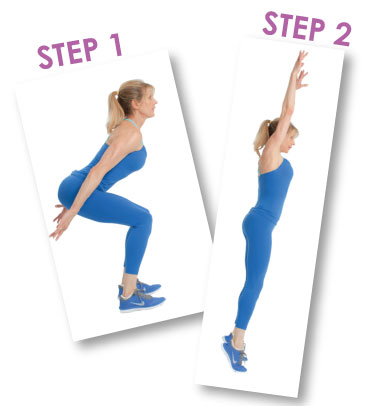
Body-weight training keeps cellulite from settling in, too. Because it tends to form in the buttocks and thighs, I like the Pop Squat: Lower into squat position as if you’re sitting down in a chair, abs engaged and making sure your knees don’t pop out past your toes. Push yourself to standing, but don’t stop there: Without locking your knees, add a little jump into the air. When you land, lower yourself right back down into the squat. Grab weights for added difficulty. Repeat for 30 seconds.
Also, certain foods help boost blood flow. Circulation Journal reported that dark chocolate (yes, chocolate), which is full of natural flavonoids, improved blood circulation compared with white chocolate. Sunflower and pumpkin seeds are known to increase circulation, too.
If you have time and money, get a massage to restore the fluid state of your connected tissue. In between massages, use a foam roller to help support the tissue on a daily basis.
• Maintain a healthy weight
The more weight you carry the more fat cells pushing through the fascia. Losing weight can result in a noticeable reduction of cellulite.
• Eat high-fiber and diuretic foods
When the body holds onto extra fluids, it adds more pressure to the fascia. If I’m feeling bloated before a photo shoot, I eat something I know will help my body get rid of extra water—my favorite is egg whites and asparagus. Well, if you’re feeling like your cellulite is more noticeable or you’re getting ready to wear something that shows a little skin and you want to minimize dimpling, then fill your plate with foods high in fiber or natural diuretics.
Fiber-rich foods take longer to digest and will keep you feeling full longer so you’re less likely to reach for a sugary or fatty, salty snack. Diuretics help the body release excess water, usually through urination. Some foods serve double duty, both high in fiber and a diuretic, such as steel-cut oats and artichokes. Even flavor enhancers, like parsley, ginger and garlic, assist the body in getting rid of water. Finally, green tea, one of my all-time favorite beverages, can give relief from bloating.
On the other hand, not enough fluids or dehydration also contribute to cellulite. Most studies show that about 2/3 of us are dehydrated and need to drink more water…so stay hydrated throughout the day! I aim to drink a gallon of water a day (yes…a gallon!). Although this may be a hefty goal for you, aim to drink at least eight glasses of water a day. To achieve this goal, set an alarm on your phone every hour on the hour from 8 am to 5 pm. When the alarm goes off, it’s time to get up, get your blood circulating, and drink a glass of water.
Remember, while you may not erase cellulite completely, being active and eating healthfully is the best way to control it.

